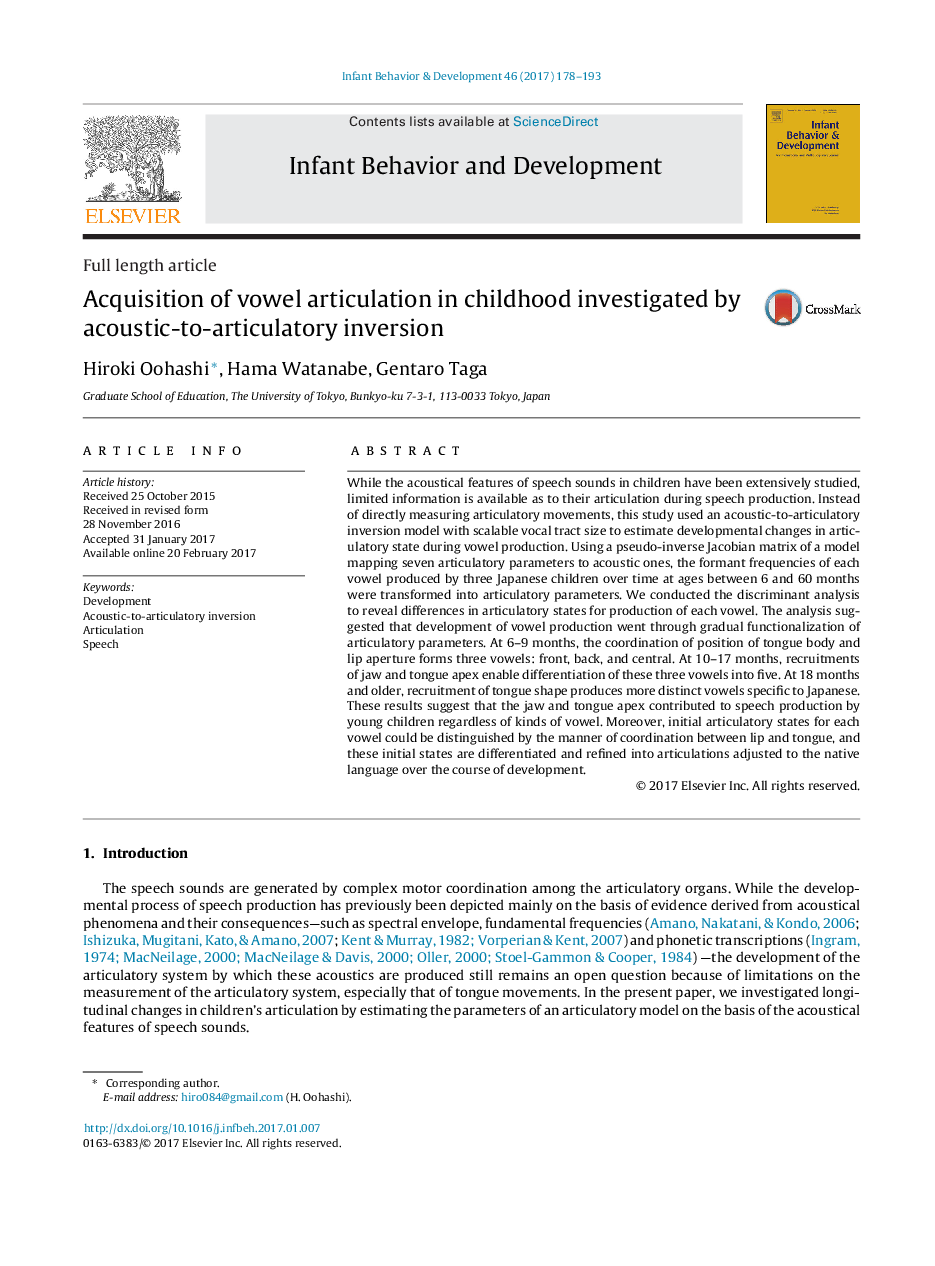| کد مقاله | کد نشریه | سال انتشار | مقاله انگلیسی | نسخه تمام متن |
|---|---|---|---|---|
| 5039796 | 1473415 | 2017 | 16 صفحه PDF | دانلود رایگان |
- We estimated developmental changes in articulatory states during vowel production.
- We applied an acoustic-to-articulatory inversion technique to recorded sounds.
- The jaw and tongue apex contributed to production of all vowels by young children.
- The development would go through gradual functionalization of articulators.
- Initial states were differentiated and refined to adjust to native language.
While the acoustical features of speech sounds in children have been extensively studied, limited information is available as to their articulation during speech production. Instead of directly measuring articulatory movements, this study used an acoustic-to-articulatory inversion model with scalable vocal tract size to estimate developmental changes in articulatory state during vowel production. Using a pseudo-inverse Jacobian matrix of a model mapping seven articulatory parameters to acoustic ones, the formant frequencies of each vowel produced by three Japanese children over time at ages between 6 and 60 months were transformed into articulatory parameters. We conducted the discriminant analysis to reveal differences in articulatory states for production of each vowel. The analysis suggested that development of vowel production went through gradual functionalization of articulatory parameters. At 6-9 months, the coordination of position of tongue body and lip aperture forms three vowels: front, back, and central. At 10-17 months, recruitments of jaw and tongue apex enable differentiation of these three vowels into five. At 18 months and older, recruitment of tongue shape produces more distinct vowels specific to Japanese. These results suggest that the jaw and tongue apex contributed to speech production by young children regardless of kinds of vowel. Moreover, initial articulatory states for each vowel could be distinguished by the manner of coordination between lip and tongue, and these initial states are differentiated and refined into articulations adjusted to the native language over the course of development.
Journal: Infant Behavior and Development - Volume 46, February 2017, Pages 178-193
